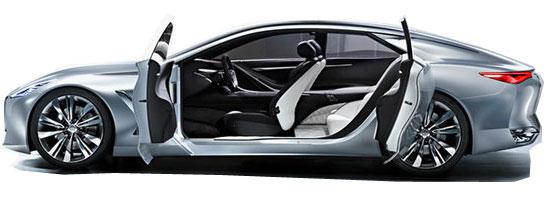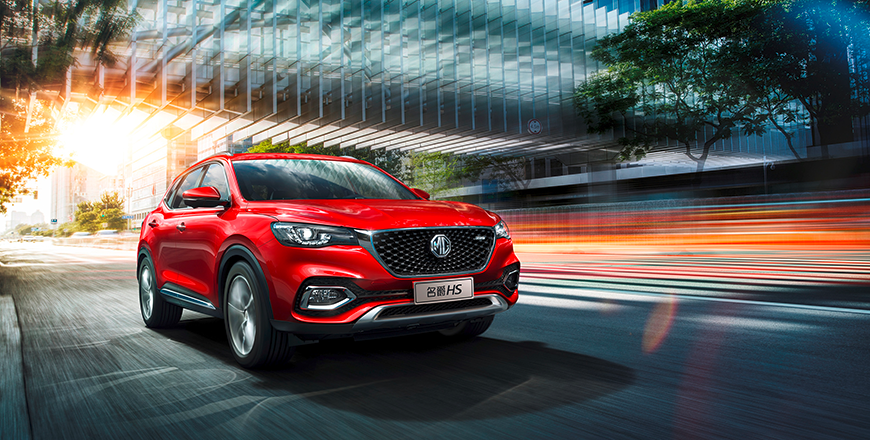You are here
As luxury reaches masses, will auto brands lose prestige?
By AFP - Jan 15,2014 - Last updated at Jan 15,2014

DETROIT –– American consumers have a taste for luxury and automakers are rushing to deliver by upgrading interiors, loading up on fancy features and expanding their offerings with stylish new models.
Some analysts warn that the line between the mass market and premium brands is blurring as automakers vie for attention in a bustling and highly competitive industry.
Voice-activated “infotainment” systems, leather seats and rear-view cameras are becoming standard options even in entry-level cars. And the speed at which innovative features migrate downward is accelerating.
While the options race has increased pressure on luxury brands to innovate, the prestige associated with their brands is what truly sets them apart.
“You can get a Nissan Maxima or Buick LaCrosse with an extraordinary amount of content. But the one thing you’re not getting is the image,” said Tom Libby, an analyst with IHS Automotive.
“That’s why people aren’t driving the Genesis –– it’s put out by Hyundai.”
The real danger comes from the introduction of down-market models being introduced by premium brands to capture new customers with a lower price point.
“The thing you have to be careful of is if you sell too many vehicles, you’re not premium anymore,” said Dave Sargent, vice president for global automotive analysis with JD Power.
“Because if everyone’s driving a BMW, you’re not special anymore.”
There is also the risk that instead of capturing new customers, existing ones will simply buy the cheaper models, he added.
Mercedes shook things up last year with the CLA, a sleek but small sedan offered with a base price of just $29,700.
The German automaker insists its “breakthrough” car is no threat to its prestige or its previous entry level option, the best-selling C class. Some 80 per cent of CLA buyers were new to the brand and most were much younger than the typical Mercedes customer.
“The huge excitement which goes around the CLA is beneficial for the brand altogether,” Mercedes-Benz chief Dieter Zetsche said as he unveiled an updated –– and upgraded –– C class at the Detroit auto show.
“It brings more dynamics, more coolness to the brand.”
Luxury carmakers aren’t just chasing new customers with their down-market options, said Bob Carter, head of automotive operations for Toyota Motor USA.
They’re also being forced into introducing smaller cars and less powerful engines in order to meet upcoming regulations tightening corporate average fuel efficiency standards, Carter said.
Unlike its main competitors, Lexus doesn’t need to downsize its engines and options to meet the new rules. The Japanese automaker is able to get its overall numbers down with the smaller vehicles sold by the Toyota and Scion brands.
“The advantage of having three brands, as we have, is we’re able to keep clearly succinct brand clarity,” he told AFP in an interview on the sidelines of the auto show.
Going small –– or even less expensive –– doesn’t have to mean going down-market, insisted Andy Goss, head of global sales for Jaguar and Land Rover.
“We’re packaging luxury in a different way with smaller vehicles,” he told AFP.
The key is to maintain the same level of quality and stay true to the “DNA of a Jaguar or Land Rover”, he said in an interview on the sideline of the Detroit show.
There are many ways to improve fuel efficiency without damaging the brand, Goss said.
The Tata-owned luxury carmaker managed to lower the weight of the new Range Rover by 360 kilos by incorporating more aluminium into its body and streamlining parts and components.
It is also exploring hybrids and the possibility of introducing diesel options in the United States, he said.
The German automakers who dominate the luxury market –– Mercedes and BMW, followed by Volkswagen’s Audi and Porsche brands –– have already introduced a number of hybrid and diesel options and are also bringing electric and eventually hydrogen-powered vehicles to market.
They have also been improving fuel efficiency and performance by taking weight out of their vehicles and integrating carbon fibre and other materials into their frames.
It’s not yet clear if this will be sufficient to meet the new standards while also maintaining premium performance.
Despite the intense competition in the luxury market, German automakers posted record sales in 2013 of 1.3 million vehicles, a five percent increase.
Germany’s VDA automakers association expects luxury sales to expand to 11 to 12 percent of the US market from 10 percent in 2013
“We are confident the premium market, which we dominate, will be growing,” VDA president Matthias Wissmann told reporters.
Related Articles
DETROIT — Hyundai is reaching for the top in launching a new luxury brand, Genesis, which aims to replicate the success of Japanese rivals w
The world’s oldest automotive expo event consistently held in one city since 1898, the biennial Paris Motor Show, or Mondial de l’Automobile, is, along with Frankfurt, Geneva and Detroit, among the most important dates on the motoring calendar.
AMMAN — In an automotive landscape where ever more carmakers looking to position themselves in an elusively ill-defined ‘premium’ segment fo

















